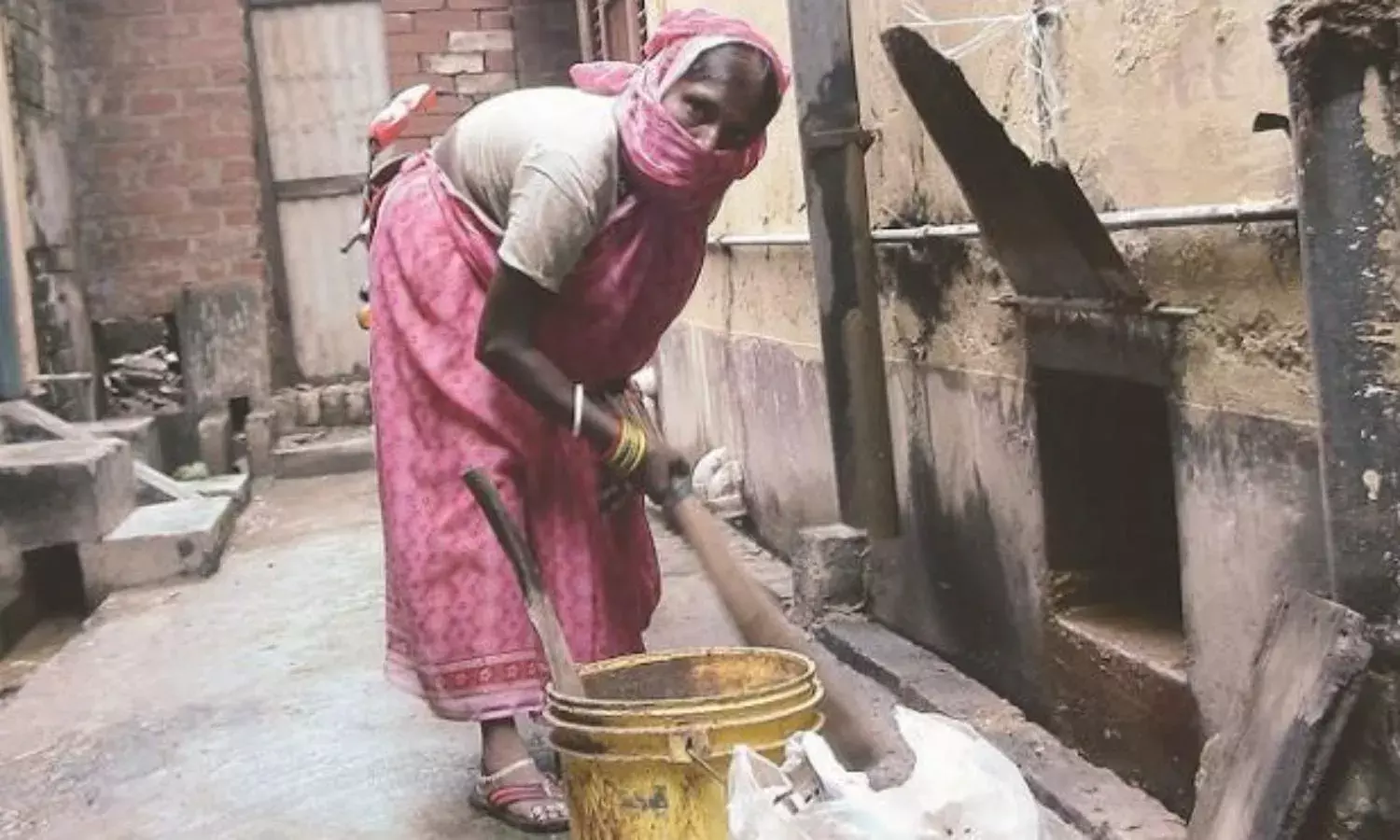After Swachh Bharat: 'One of the Biggest Crises in 2021 India'
'80% of sanitation workers do not even reach the age of retirement'

Pragya Akhilesh is secretary of the Bhim Safai Karamchari Trade Union and national convener of the Rehabilitation Research Initiative. In this interview she discusses the health and sanitation hazard of toilets without water, and poorly constructed dry latrines contaminating the water supply, which she calls ‘one of the biggest crises’ in contemporary India.
Is it true that toilets have become hotbeds of disease spread in the pandemic?
The lockdown has had its own problems with decreasing toilet usage. In 2020 there was a massive decline in actual toilet usage in rural India. This is mainly because toilets are in poor shape, the roofs are falling, doors are breaking or soggy and there is an acute shortage of water supply. The outcome of this is that toilets have become hotbeds for disease spread.
Sanitation workers are cleaning these toilets without access to any kind of protection gear. The government’s silence on toilet maintenance is shocking as the ‘value of service’ is declining, and because of that all the pressure falls on sanitation workers. All through the lockdown the sanitation workers have continued this work but they have not been given their due like other health care professionals in India.
You have been monitoring 10 lakh toilets in India and found that 46,000 dry latrines were in active use during the lockdown. Why?
Despite the PEMSR Act, 2013 [Prohibition of Employment of Manual Scavengers and their Rehabilitation] its implementation in the informal settlements in the rural areas of India is completely fractured, therefore ‘dry latrines’ are one of the biggest crises in 2021 India.
These toilets damage the health of sanitation workers and the communities severely. Along the India–Bangladesh border we found a series of many ‘hanging toilets’, where the unmanaged effluents mix with nearby water bodies even polluting the drinking water. Because these areas are completely remote there is no accessible sanitation coverage.
The lockdown has also resulted in communities building ‘dry latrines’ by digging small pits in nearby compounds because women do not want to send their children to faraway toilets.
With the Union government spending so much on the Swachh Bharat Abhiyan, why is there still a prevalence of these types of toilets?
In India we are only focusing on building toilets. There is less focus on eradicating the previously constructed dry latrines. There is a vast difference between the database of urban and rural sanitation coverage in India. The hanging toilets and dry latrines found in semi-urban and rural areas continue to exist also because we have not been able to reach them. The sanitary toilets built under the SBA have their own unique problems.
In this way both insanitary and newly constructed sanitary toilets have become burdens for India’s sanitation workers. There is no focus on the fact that 80 per cent of the sanitation workers are not even reaching the age of retirement. Even within sanitary toilets they are forced to manually scavenge excreta because of non-availability of continued water supply.
Why is a steady water supply not available despite improved water supply in the last decade?
In rural areas, even in the households which have improved water coverage like the availability of piped water supply, long power cuts hinder toilet usage. If there are 6-8 hour power cuts then how will the tanks get filled enough for every flush? People therefore leave the toilets without flushing them. Even the pour flush technique can only be accessed if there is availability of unimproved water supply nearby. This again puts focus on the proximity of water supply for single toilet usage from mobile containers. So if built-in water supply cannot be used, the procedure becomes very complex, even after efforts to integrate water services with sanitation services in every toilet.
Why do people still defecate in the open?
Many women still chose to defecate in the open even in big cities like Delhi and Mumbai. If you visit the banks of Yamuna in the early morning in Delhi you will find people defecating in multiple lines. This is also because the amount of water in the containment is not directly proportional to the number actually using it. So if you are going to use the toilet after 9 am there is no water left anymore.
In other words, community toilet building is completely different to household toilet building. The water usage and tank capacity has to be kept in mind otherwise people will continue to defecate in the open.
Another important aspect is that toilets without continuous water supply become hotbeds for disease spread.
The government has no understanding of the current state of the toilets they have probably built 5 years ago. While sanitation workers continue to get sick, forced to clean these toilets, hundreds of these toilets are in poor shape and almost abandoned.
Mohit Yadav is co-ordinator of the Sulabh Sewa Campaign, Mumbai


